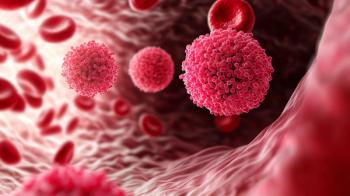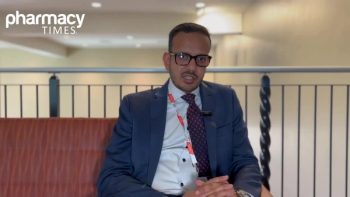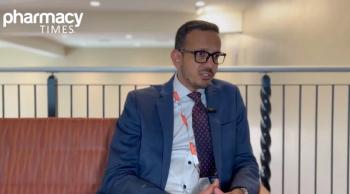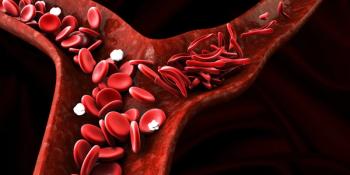
Hurricane Joaquin: Help Prepared for Pharmacies
As Hurricane Joaquin blasts the Bahamas, many have feared that the storm would travel north to the East Coast.
As Hurricane Joaquin blasts the Bahamas, many have feared that the storm would travel north to the East Coast.
Although a landfall on US ground is now less likely, Healthcare Ready, which helps strengthen health care supply chains during disasters, is still prepared for the worst.
Executive director Emily Lord told Pharmacy Times that Healthcare Ready trains for disasters such as Category 4 Hurricane Joaquin on an annual basis with a crisis simulation exercise. She said Healthcare Ready would adopt an “alert status” on October 2, 2015, and start response procedures to help communities in case the hurricane touched down on the East Coast.
Some of Healthcare Ready’s work includes monitoring natural and international disasters, opening up communication channels to share and react to sensitive information, providing situation updates from public and private sources, and activating Rx Open maps, which show the public and emergency responders where the nearest open pharmacy is during a crisis.
In the past, the company (formerly known as Rx Response) has helped prevent disruptions in areas experiencing power outages.
In one case, power outages created a problem for patients relying on medical devices that were running out of battery. Responding to a call from the Federal Emergency Management Agency, Healthcare Ready reached out to private sector companies and asked them to help set up charging stations. As a result, multiple national chain pharmacies opened charging stations within 1 day.
“It directly helped those relying on things like motorized wheelchairs regain some of their independence,” Lord said.
In another case, Healthcare Ready helped keep the supply chain running when during an emergency, truck drivers were out on the roads with medication deliveries but could not find personnel at the pharmacies to receive the medicine. Healthcare Ready called independent pharmacies in the area and helped track down which pharmacies were still open, which made medications available to individuals in those communities.
Lord spoke with Pharmacy Times further about the role Healthcare Ready plays in emergency situations.
Q: What’s the most common event that Healthcare Ready is called upon to help?
A: We have done it all, but our most common activations are for natural disasters. We’ve worked earthquakes, fires, floods, and, of course, hurricanes.
The largest activation was Hurricane Sandy, but we are gearing up right now for Hurricane Joaquin. We’re also prepared for man-made events such as terrorist attacks and disease pandemics.
For all of these events, one of the most important tools is our free Rx Open online map (activated by request of government or the Red Cross), so everyone can see open pharmacies in disaster-affected areas.
Q: How does Healthcare Ready advocate for increased participation of pharmacists in public health initiatives?
A: We are continually advocating for pharmacists to undertake a larger role with public health.
During the H1N1 outbreak, we were one of the first and most vocal advocates for allowing pharmacies to vaccinate the public. It makes sense because pharmacists are trusted within their communities, and everyone knows where their local pharmacy is!
We also work to make sure that public health and emergency response personnel keep pharmacies at the top of their lists in terms of coordinating when responding after a disaster.
Q: How did Healthcare Ready help during Hurricane Sandy?
A: We worked around the clock to share information between pharmacies, government, and the public. This helped everyone know what issues were being experienced, but more than anything, it helped to calm a lot of panic that is common during a large-scale emergency.
We launched our Rx Open map so that the public knew where the closest open pharmacy was. We also worked individually with pharmacies to learn about any barriers to being open (like no power or problems with deliveries) and then we worked directly with the government and other partners to solve those problems.
We helped make sure people in Red Cross shelters had all of the supplies and medicines that they needed. We assisted them with things like co-pay assistance.
Our pharmacy status reporting tool, Rx Open, was deployed in 11 states following Sandy’s landfall. Widespread media coverage of the Rx Open tool following Sandy quadrupled traffic to the site.
In addition, more than 200 pharmacies in the New York and New Jersey area that were not registered in the database at that time asked to be included for future disasters.
Q: How does Healthcare Ready collaborate with government agencies/industry partners?
A: We are a nonprofit organization, and we consider ourselves a true public/private partnership.
We have strong relationships at the federal, state, and local levels. We work with all parts of the health care sector and their supply chains.
We also work with philanthropies that have interest in resilience, response, and recovery. We serve as the bridge.
The information sharing—particularly between the public and private sectors—is more than simply sharing data; it’s about building relationships.
It takes leadership, engagement, planning, and diplomacy to build a strong knowledge sharing system. If you have accurate and credible information going into the system, more people will want to access and use the system, making it sustainable and valuable.
No single group can do it on their own, so we’re there to connect the pieces, forge relationships, and solve real problems. It doesn’t matter if it’s a retail or hospital pharmacy, a truck on the road, or a manufacturer. We’re ready to assist wherever we can.
This isn’t limited to during and directly before disasters. For example, we’re currently working on a set of trainings for the CDC [US Centers and Disease Control and Prevention] on the subject of the biopharmaceutical supply chain, and bringing some of our private sector partners into the discussions.
It’s so important to make sure the public sector understands how our supply chain works and why they should help protect it during disasters.
Newsletter
Stay informed on drug updates, treatment guidelines, and pharmacy practice trends—subscribe to Pharmacy Times for weekly clinical insights.



















































































































































































































